Welcome to walleye fishing
A beginner’s guide to the largest member of the perch family
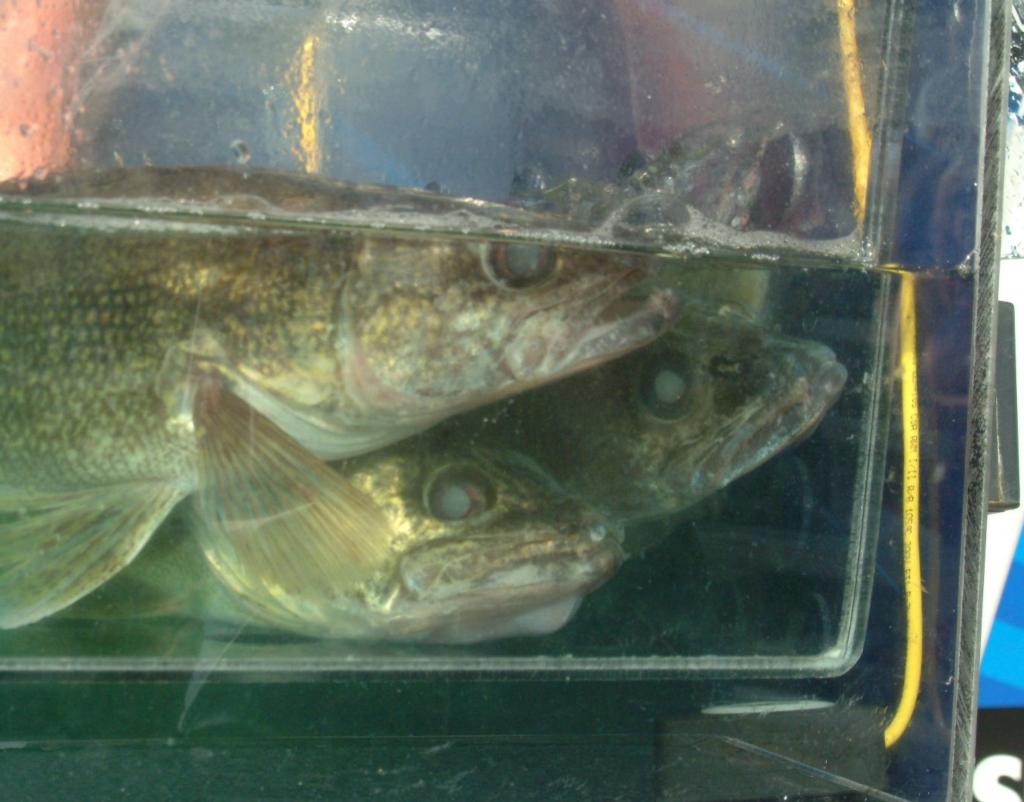
Allow me to introduce my friend “Joe.” Joe doesn’t fish much except for an occasional panfish or bass outing with his two young boys. However, he wants to learn how to catch walleyes but doesn’t know where to start. In this article, we show Joe the basic equipment and methods needed to put the elusive, marble eye in the boat.
Equipment:
For starters, Joe will need a spinning rod and sorry, that old Zebco 33 combo won’t do. The perfect all-around walleye rod is 6 feet, 6 inches in length and has medium action. Action simply refers to how thick and flexible the rod is. Because this is his first walleye rod, Joe should not spend top dollar until he feels comfortable and can understand subtle differences. A great option would be the Berkley IM6 Lightning rod. At $35, you’re getting an unbelievable value for a sensitive, yet sturdy rod. For 20 more dollars, Joe could upgrade to a Fenwick Eagle, an exceptional all-purpose walleye rod. Both are made of graphite, the Fenwick just has more durable guides and is lighter, yet stronger.
For a beginning angler, a smooth reel is of the utmost important. Backlashes and tangles can frustrate 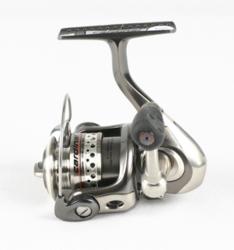 even the most seasoned fishermen. Shimano has an impressive line of spinning reels starting at roughly $30. The Sienna, which is the least expensive, is a solid reel for the price. It would work well with the Berkley Lightning rod, but may be on the cheap side for the Fenwick Eagle. A better fit would be the Shimano Sonora, which costs $10 more than the Sienna but has more features and is better built. For $50, the Shimano Sedona is a slight step above the Sonora and would be perfect for the Fenwick rod. Combined, the rod and reel cost $105 and would be ideal for jigging and pitching crankbaits. The Abu Garcia Cardinal 300 Series is also a great option at $40.
even the most seasoned fishermen. Shimano has an impressive line of spinning reels starting at roughly $30. The Sienna, which is the least expensive, is a solid reel for the price. It would work well with the Berkley Lightning rod, but may be on the cheap side for the Fenwick Eagle. A better fit would be the Shimano Sonora, which costs $10 more than the Sienna but has more features and is better built. For $50, the Shimano Sedona is a slight step above the Sonora and would be perfect for the Fenwick rod. Combined, the rod and reel cost $105 and would be ideal for jigging and pitching crankbaits. The Abu Garcia Cardinal 300 Series is also a great option at $40.
Techniques:
Jigging: There are five basic presentations a beginning walleye angler needs to learn. The first is jigging. This is likely the most simple of all, but the devil is in the details. Like many walleye presentations, jigging is effective because it keeps the bait near the bottom of the water column. On calm days a 1/16 or 1/8-ounce jig is likely your best bet. The generally rule of thumb for jig size is to go bigger when it’s windy. The same can be said for fishing deep water or in current. The reason behind this is simple – you need to be able to feel your jig. If you can’t feel it, it’s too light. On the other hand, you want the smallest jig you can feel and control. A few popular brands include the Lindy Techni-Glo Max Gap jig and the Northland Gum-Ball jig.
Once you feel the jig hit the bottom, slowly raise it approximately 6-10 inches. Pause for three seconds and then slowly allow the jig to hit the bottom. The biggest mistake novice jiggers make is moving the jig too fast. Underwater cameras have taught anglers that fast movement oftentimes spooks fish. In addition, most of your bites will come during the “pause” portion of the presentation. Generally speaking, the colder the water temperature is, the slower you want to move your jig. Tip these jigs with a leech, a minnow or a night crawler. If you don’t want to use live bait, Berkley has developed a new line of plastic baits called Gulp Alive. Although they are pricey, they are without a doubt the most effective walleye plastics on the market. What makes them effective is their scent and attractant. When 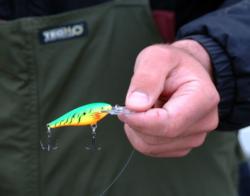 the fish are biting, Gulp Alive can be even better than live bait because it is more durable. For walleye anglers, Gulp comes in minnow, leech and night crawler varieties.
the fish are biting, Gulp Alive can be even better than live bait because it is more durable. For walleye anglers, Gulp comes in minnow, leech and night crawler varieties.
Casting crankbaits: If you’re looking for a relaxing day on the water, this will not be your preferred method for catching walleyes. Repeatedly casting crankbaits can become tedious, if not a bit tiresome, but the effort is worth it more times than not. Although they can be effective throughout the day, casting cranks works best during low-light periods (dawn, dusk, cloudy, windy) when the walleyes move shallow to feed. For fishing depths of 6-8 feet, a No. 5 Shad Rap is hard to beat. If you’re fishing slightly deeper water, upsize to a No. 7 Shad Rap, which weighs 5/16 of an ounce. As a general rule of thumb, the faster you reel, the deeper the crankbait will dive.
Another popular brand of cranks is the Berkley Frenzy Flicker Shads. These baits, designed by walleye legends Gary Parsons and Keith Kavajecz, are a less-expensive alternative to the Shad Raps. The best colors usually depend on the forage in the system, but silver, firetiger, shad and yellow perch are all known producers. Before purchasing a crankbait, read the packaging closely to see how deep it dives. In most cases, a crankbait with a longer bill will dive deeper.
Rigging: Believe it or not, people were rigging long before Brainerd, Minn., brothers Ron and Al Lindner decided to pre-tie a sliding sinker with a leader and a hook. But to their credit, the Lindners, along with Gary Roach, were the ones who made it popular. When walleye anglers refer to a rig, they’re talking about a simple device that keeps an angler’s bait near the bottom. The sinker or weight brings the device down and the leader brings the bait away from the sinker. Some anglers will use leaders as short as 2 feet while other anglers opt for leaders up to 8 feet in length. On clear, highly-pressured lakes, it is wise to increase the length of your leader. When you feel something unusual like a snap or a 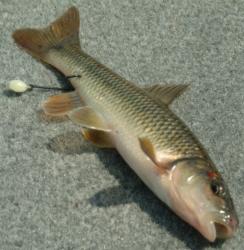 tug, a walleye is probably grabbing the bait. At that point, feed some line and let the fish chew for a few seconds before setting the hook.
tug, a walleye is probably grabbing the bait. At that point, feed some line and let the fish chew for a few seconds before setting the hook.
If you like this method but prefer covering more water, try using a bottom bouncer. A bottom bouncer is simply a sinker that is fashioned into a wire so that it glides over jagged rocks, logs, stumps, and weeds without snagging or hanging up. When rigging, anglers use any combination of leeches, minnows, and night crawlers.
Trolling: When fishing expansive bodies of water like Lake Erie, Bays de Noc and Green Bay, the easiest way to put walleyes in the boat is by trolling. Simply put, trolling allows and angler to cover the most water in the least amount of time. Trolling is also great for nomadic walleyes that aren’t relating to a specific piece of structure. Most people troll with planer boards – devices that spread an angler’s lines and widen their trolling path. If you have extremely long rods or are trolling a narrow river system, planer boards likely won’t be needed.
Planer boards are towed at a slight angle to pull themselves out to the side of the boat. A release clip that snaps onto the line from the rod and reel sets the distance back to the bait and the amount of line let out from the reel controls the distance the side planer moves out from the boat. On the strike, the side planer slides down the line and stays attached until the fish is landed. Planer boards also allow you to run multiple baits and with this in mind, trollers oftentimes vary their depths greatly – one near the top of the water column and one near the bottom. To get your bait near the bottom when trolling, use the aforementioned bottom bouncer.
In the spring when the water is cold, most savvy walleye veterans troll around 1 mph. If the wind is too strong and your boat is moving too fast, use a drift sock to slow yourself down. In the fall, some anglers will troll as fast as 4 mph in an attempt to target active fish. The most common lures to use when trolling are spinners with night crawlers and deep-diving crankbaits.
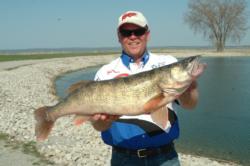 Long-lining is another type of trolling that puts fish in the boat year-round. Long-lining works best when you want to cover a lot of water at a uniform depth. Because of the length of line you must let out, it doesn’t work well when maneuvering around a specific structure.
Long-lining is another type of trolling that puts fish in the boat year-round. Long-lining works best when you want to cover a lot of water at a uniform depth. Because of the length of line you must let out, it doesn’t work well when maneuvering around a specific structure.
Tie a crankbait on monofilament line using a loop knot that allows for maximum action. Let the line out 100 to 120 feet behind the boat and begin trolling at speeds of 1.5 to 2.5 mph. Those speeds are an arbitrary starting point – adjust to what the fish want. For near-shore depths of 4-10 feet a traditional shallow-running Rapala works well. Attach a split-shot sinker 3 feet ahead of the lure to make sure it’s running near the bottom. If weeds are problematic, remove the split shot and the crankbait will run higher.
Slip-corking: If you’ve marked fish on your electronics or have a lot of confidence that walleyes are holding in a specific area, slip corks or bobbers are a great way to trick them into biting. The bobber setup starts by adding a slip-knot or stopper to your line. Slide the plastic piece off, tighten both ends and slide it down to the depth you think you’ll be fishing. The next steps include sliding on a small bead, then the cork or bobber, and then tying on a No. 8 or No. 6 single hook. If you’re using bigger minnows, like chubs, you can even upsize to a No. 4 hook. When selecting a hook, look for a wide gap and a sharp tip. That sounds like a no-brainer, but you’d be surprised at how many hooks come out of the box dull.
Once you’ve tied your hook, pinch two split shots, equal distance apart, on your line. The split shot closest to your hook should be spaced out approximately 6-8 inches. If the lake is highly pressured, you may want to consider spreading your split shots even further way from your bait. Now comes the 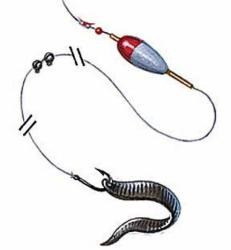 important part – checking your depth. Clip a weighted depth finder on your hook and drop your line down to the bottom. Can you see your bobber? If not, you’re positioned too shallow. Slide your knot further away from the reel and drop it down again. If your bobber is about 6 inches under the surface, you’re at the correct depth.
important part – checking your depth. Clip a weighted depth finder on your hook and drop your line down to the bottom. Can you see your bobber? If not, you’re positioned too shallow. Slide your knot further away from the reel and drop it down again. If your bobber is about 6 inches under the surface, you’re at the correct depth.
When fishing with bobbers let the bait do most of the work. Occasionally twitching your line can sometimes induce strikes, but don’t overdo it. When your bobber goes down, count to four and set the hook, keeping your rod straight up and down. For walleye fishing with kids, this is a great method simply because the bite is visual.
Once you’ve mastered these five techniques, its time to learn advanced techniques such as handlining, leadcore trolling and fishing wing dams.
Walleye fast facts:
Walleyes are low-light feeders: Your best bet is to fish them shortly after sunrise and shortly before dusk. I’ve had several experiences in the Boundary Waters where I fished the same spot for hours but didn’t get a bite until 30 minutes before sunset. The fish were there the entire time, but wouldn’t begin eating until it was darker.
Use the wind as your friend: Walleyes can be tough to find. Sometimes they are located on breaks, sometimes they are in the weeds. But the wind can be your ally because it positions baitfish. When a group of perch or shad are pushed up against an island because of a steady 20 mph wind, you can bet a school of hungry walleyes will be right behind them.
May and June are primetime: In the walleye-rich states of Minnesota, Wisconsin and the Dakotas, May and June are the best months to catch walleyes. They can and will cooperate throughout the summer and fall, but May and June provide the most consistent action. In mid-October, the big females start cooperating again but the action is typically hit or miss.
Different walleyes behave differently: In lakes where there is little natural reproduction, walleyes oftentimes relate to weeds instead of breaks and points. Stocked walleyes also tend to live shallower than natural walleyes.
For line, start with monofilament: Mono may not be the best line for all applications, but it is very diverse. An extremely popular brand of mono is Trilene XL in either 8 or 10-pound test. Once you get comfortable with mono, branch out to copolymer and then fluorocarbon.
Saugers tend to live deeper: Although they are very similar in appearance, saugers tend to live in deeper haunts than walleyes. Unlike walleyes, saugers are seldom found in weeds – instead relating stronger to sandy bottoms.
The spawn is on: In most fisheries, walleyes begin to spawn in the spring when the water temperature reaches 48 degrees. Although it is generally accepted in the bass-fishing world, sight-fishing for spawning walleyes is regarded as unethical.